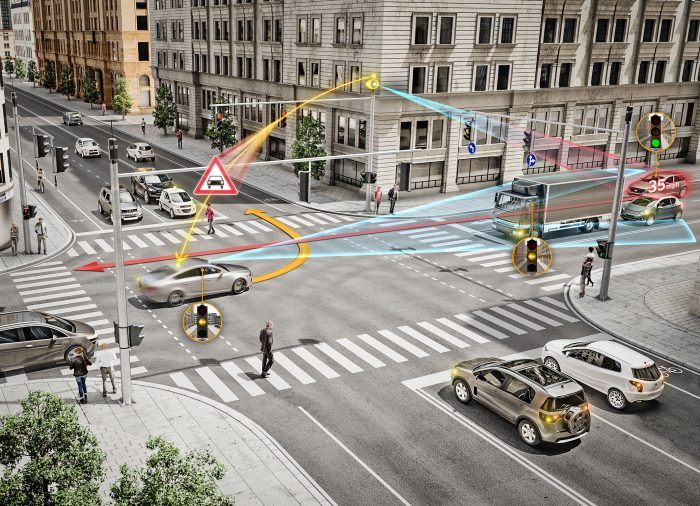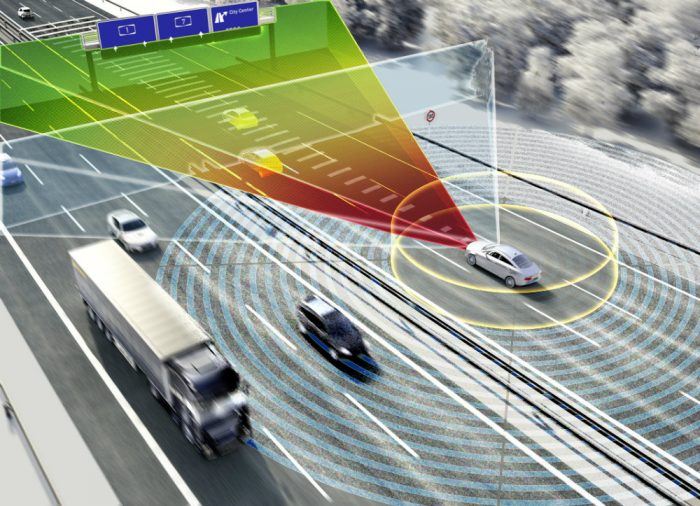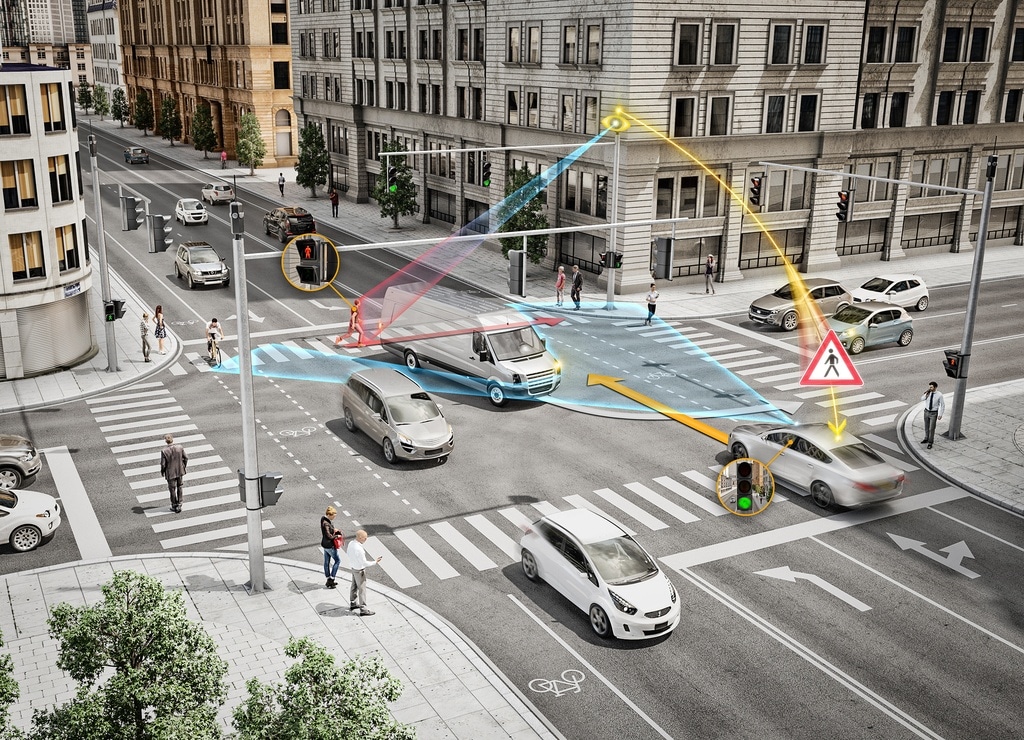According to the United States Department of Transportation, 51 percent of all injury crashes and 28 percent of all fatal crashes occur at either an intersection or T-junction. The causes of these collisions are numerous. Sometimes, drivers are distracted or under the influence; others may have mistakenly misjudged the situation or were unable to see another car or pedestrian approaching. Overall, the National Safety Council found that over 40,000 motor vehicle deaths occurred in 2016, making it the deadliest year on U.S. roads since 2007.
Reducing The Numbers
Autonomous driving proponents believe vehicle perception technologies will help improve such grim statistics. In other words, if a vehicle could see its environment, communicate with other cars and the surrounding infrastructure, many – if not all – of today’s traffic accidents could be prevented, especially at intersections. One such technology is Continental’s Vehicle-to-X, a system that can detect road users within a 360° radius of an intersection. V2X communicates the position and movement of any objects within that field of vision to oncoming vehicles equipped with the technology. Continental says V2X is part of the company’s Intelligent Intersection concept, described as an “end-to-end solution.”
“Our solution is based on transferring and adapting vehicle-proven hardware and software solutions to an infrastructure application,” explained Jeremy McClain, Head of Systems & Technology, Chassis & Safety, Continental North America. “Cities will be able to deploy this technology to increase safety for their citizens and visitors alike.”
Continental’s V2X uses advanced sensor fusion algorithms and Dedicated Short-Range Communication (DSRC) units to generate an environmental model of the intersection. It can detect other cars, and is designed to prevent left-turning vehicles from getting struck head-on by traffic that may suddenly appear out of nowhere. V2X also detects pedestrians and cyclists, something other safety advocates say is an important element to consider. For example, Richard Schram, Technical Manager, Euro NCAP, highlighted the organization’s 2025 Road Map at AutoSens Brussels in September. He explained that Euro NCAP is working to minimize the higher fatality rates associated with two-wheeled vehicles in an accident.

Eye In The Sky
However, pedestrians and cyclists only benefit from this technology if they can actually be detected by it, a critical point raised by Continental during the research and develop of V2X. By placing cameras, radar, and LiDAR at the corners of a intersection to communicate with vehicles, Continental hopes to reduce the number of accidents within an intersection. Continental says once those road users are detected, a list of relevant objects are delivered to a sensor fusion unit, which generates a comprehensive 360° environmental model.
Those relevant objects are then sent via Dedicated Short-Range Communications to every approaching vehicle. A special control unit inside the vehicle receives the messages, where an on-board system checks it for relevance, and triggers action accordingly if a critical situation is at hand. Should a collision appear imminent, a warning can be sent to the driver, or the vehicle’s brakes could be deployed automatically.
“With the Intelligent Intersection technology, we offer a new safety element with a perfect fit for future smart cities,” said Bastian Zydek, Project Manager, Intelligent Intersection. “Active monitoring of intersections provides the driver and/or intelligent vehicle system a very important time advantage to take action, even before a problem would have otherwise become visible.”
“In the longer term, the technology can also serve to improve inner-city traffic flow, thereby reducing travel time and vehicle emissions,” McClain added.

Human Touch
Continental will be discussing Intelligent Intersection and its corresponding technologies at the Consumer Electronics Show, Tuesday January 9th through Friday January 12th in Las Vegas, Nevada. Intelligent Intersection was first demonstrated on a test track in October at Continental’s development center in Brimley, Michigan. The next steps include a lager test and pilot implementation at an intersection in Columbus, Ohio.
Earlier this year, we met with Continental representatives during an industry event at Detroit’s Cobo Center. We learned about the company’s five different internal divisions, each with their own unique technologies and objectives. What we found was how each of those divisions come together to create the company’s single most important vision.
“The Intelligent Intersection is a showcase of collaborative safety and a further step towards reaching our Vision Zero – our vision of accident-free driving,” Zydek said.
Carl Anthony is Managing Editor of Automoblog and resides in Detroit, Michigan.
Photos & Source: Continental.



